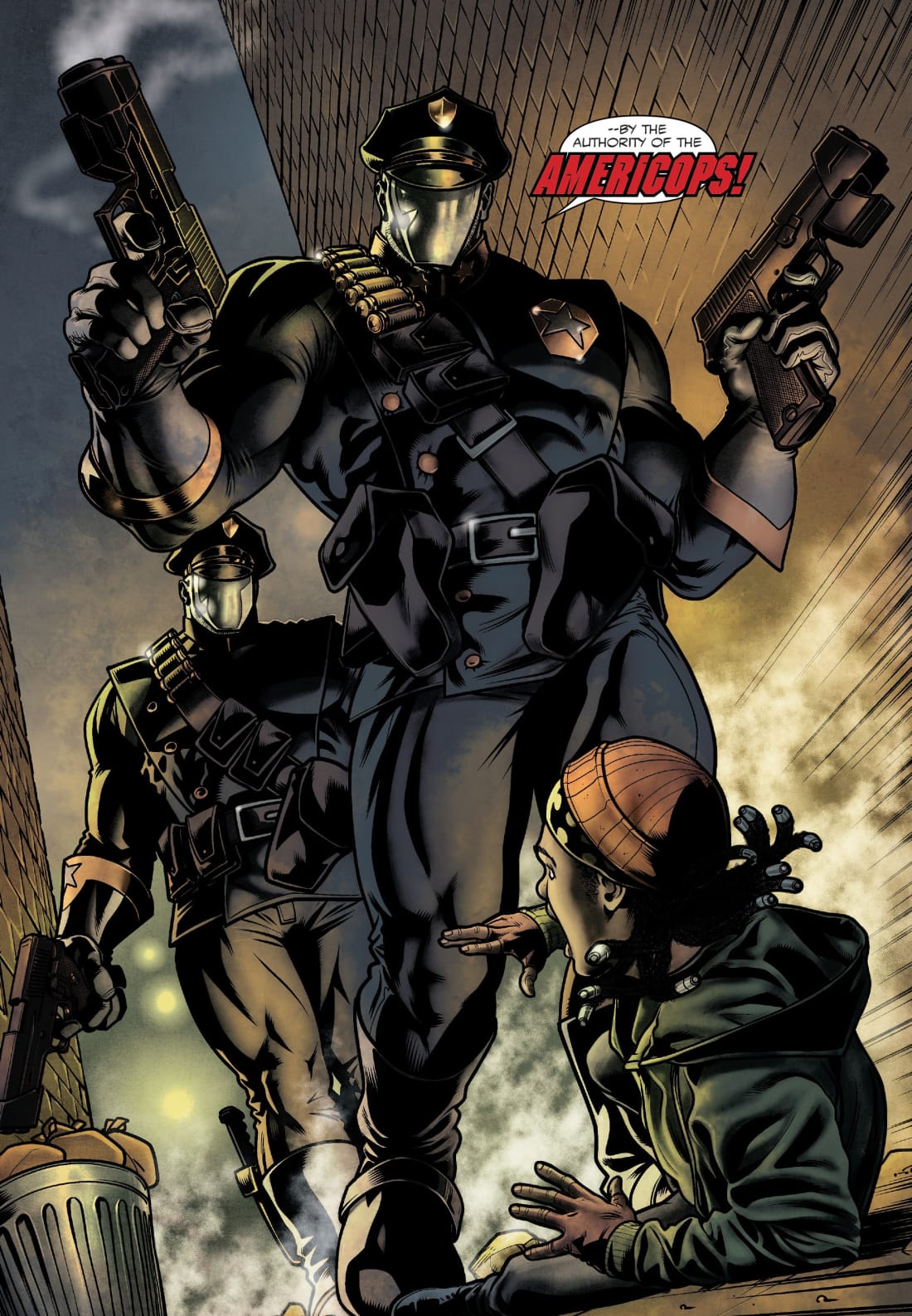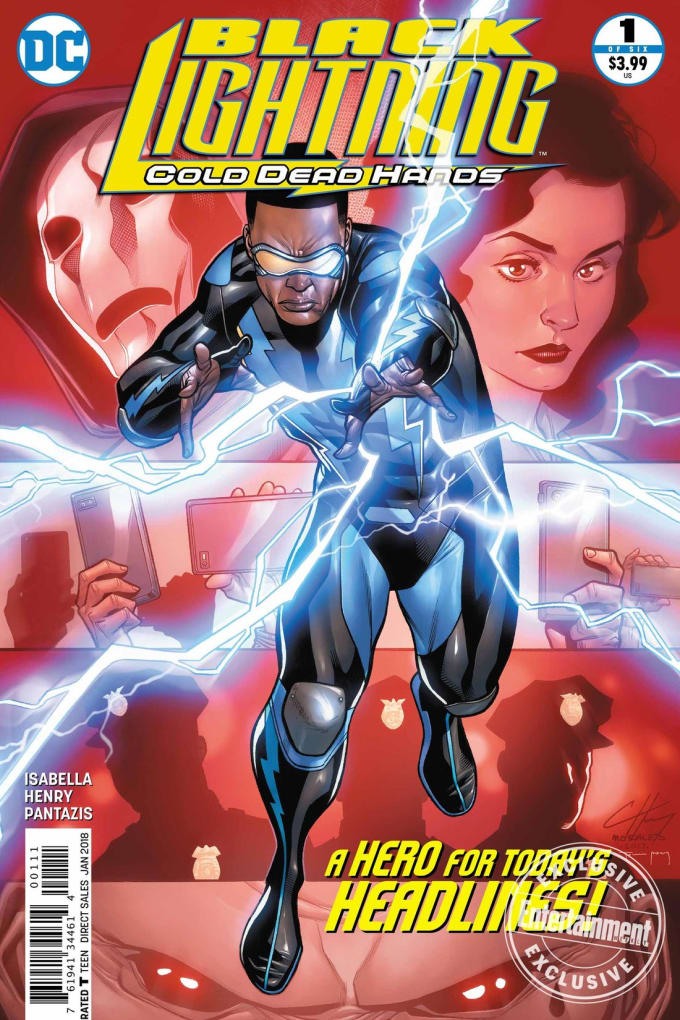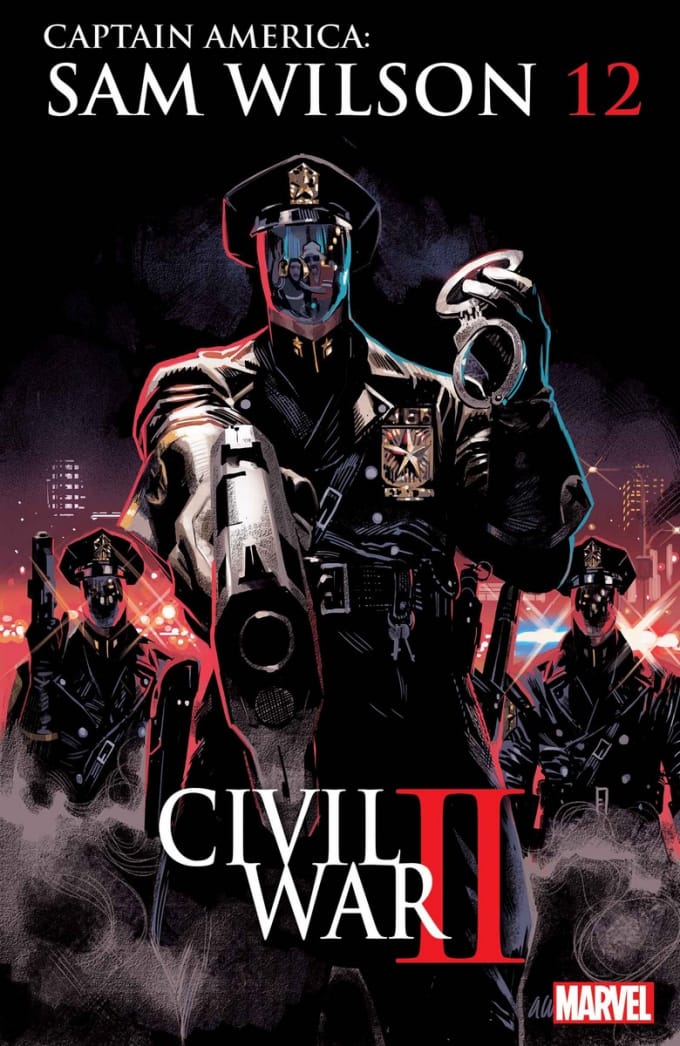Geeks is powered by Vocal.
Vocal is a platform that provides storytelling tools and engaged communities for writers, musicians, filmmakers, podcasters, and other creators to get discovered and fund their creativity.
How does Vocal work?
Creators share their stories on Vocal’s communities. In return, creators earn money when they are tipped and when their stories are read.
How do I join Vocal?
Vocal welcomes creators of all shapes and sizes. Join for free and start creating.
To learn more about Vocal, visit our resources.
Show lessCops vs Superheroes
What Sam Wilson, Nighthawk, and Black Lightning’s Fights with the Law Mean in Today’s Reality

Earlier this year, a close friend of mine was killed at the hands of police. I won’t go into too much detail about it (because this article has enough triggers), but long story short, it wasn’t met with the worldwide media attention as a bunch of other fatalities handed by police towards black men and women. That’s not to say that I think they all need to flood your Facebook timelines every time a black person dies at the hands of police (oftentimes unarmed) because if so, we’ll wouldn’t be able to escape it.
Since 2012, we’ve seen an increase in televised media coverage of police brutality. Being black in America has never been scarier. I take that back. Being black in America has always been scary, and oftentimes there’s not an understanding as to why by the majority.
Which brings us back to comics. For many blerds (“Black nerds” for those that need a definition), comics is our way of escaping the scary reality that is our day-to-day struggle to stay alive and not look guilty. Lately for myself, I’ve been immersed in three: Captain America: Sam Wilson, Nighthawk, and Black Lightning: Cold Dead Hands.
Each of these stories dealt with the issue of blacks vs the police in similar but different ways. At their core, they perform a story that is often used in many comic story: the hero vs the police.
You’ve seen it yourself if you’ve read comics or watch comic-based TV shows. How many times have Batman and GCPD squared off? How many run-ins have Peter Parker had with the police (and you can make the same argument for Gwen Stacy and Miles Morales)?
We’ve all seen how it ends. The hero is framed for a crime they never committed, they find out who did, capture said villain, and their name is cleared. For Sam Wilson, Nighthawk, and Black Lightning, it’s a lot more complicated, not to mention tragic.
For the sake of differentiating the three heroes’ approaches, I’ve ranked them by extremes. On the lower end, the hero in question attempts to keep as much peace between himself and the authorities as possible while still getting his job done. On the higher end, the hero in question goes to absolute war against anybody, including the police themselves. The following does include spoilers, but it also includes triggers.
Black Lightning: Cold Dead Hands

Black Lightning has always been a hero that has gone by the book. A school teacher by day, Jefferson Pierce values the community he serves and seeks to protect it by all means necessary. With Tony Isabella back in the writing role for his creation, Cold Dead Hands is a fitting revival of Black Lightning’s fight to protect his city (specifically Cleveland, OH. Whoop whoop).
It’s established early that Black Lightning has a fairly solid relationship with the police. His best friend, Tommi Colavito, is a high-ranked detective after all, though it’s not quite the Batman and Commissioner Gordon relationship, but it at least gives BL some good words in with the force. Well, it should have.
After pursuing a gang known as The Weathermen, armed with guns that mimic extreme weather conditions, BL finally catches them and foils their criminal plots. However, a bigger fish that supplies these guns decides to activate a self destruct mechanism that shocks the user to death... in front of witnesses and the police. Not a good day for a hero with electrical powers.
As police open fire, BL makes it a point not to make the situation worse and flees. As word gets around of BL murdering The Weathermen, the guns used in the crimes hit the streets. While attempting to protect the community he swore to serve, he gets backlash from both the community itself and the police officers as he tries to get information on the guns’ origins.
While it’s only in its 2nd issue, Cold Dead Hands already has BL making mindful decisions and nearly heartbreaking observations. An example of the former is his decision to use a burner phone to alert the police of a drug dealer on his school’s campus rather than use his powers to apprehend him, in fear of the public making a connection between BL and his school. An example of the latter is how he narrowly escaped a Black cop opening fire on him. BL couldn’t distinguish if the cop had hate or fear in his eyes.
#TakeBackTheShield

When Sam Wilson took up mantle as Captain America after Steve Rodgers aging caught up to him, of course people were not going to give him the same amount of respect as they gave the original. However, despite the hate, Sam was able to hold his own and make the shield work for him while still being true to his roots and beliefs; even going as far as putting his Falcon wings on the traditional red, white, and blue costume.
As soon as Steve got his youth and strength back though, the call came down to #TakeBackTheShield, especially when Sam began to speak out against the rising police force known as the Americops. Though noble as it may have seemed when it started, a more insidious plot was revealed when the force began to brutalize citizens without cause in order to gentrify poor neighborhoods. Before this plot was revealed, Sam tried his best to be diplomatic between the two sides. As expected, it didn’t go over well with the citizens.
Enter Rage. If you can recall old Avengers series, he was a lesser known member with enhanced strength and endurance. Also, as his name implies, he had difficulty controlling his anger. As the youngest Avenger during that time, he has since grown and taken up vigilante work within Philadelphia. The last thing he wanted to see was an Avenger, a Black one at that, not sticking up for his people. As you can guess, friction arose between the two.
Eventually they were able to get on the same page and take the fight to the Americops and US Patriot as well (another ex-Avenger) before Rage was apprehended by the Americans after trying to stop a local robbery. This is where the series takes a dark turn. Rather than allowing Sam to use his connections to get him free, Rage refused, offering himself as a martyr for the world to see that a broken system was not going to let up for a Black man, even if he used to be an Avenger. Rage was tried and found guilty of robbery, assaulting officers, and resisting arrest. And while it couldn’t get any worse, Rage was later jumped in prison and left in a coma for the remainder of the series.
Sam Wilson and Rage brought about two ideologies. There is Sam who wanted to be a diplomatic as possible without causing any harm to the police or the citizens, while Rage takes a more direct and violent approach to protect his people. Even though this brought a tragic end to Rage so far, he became exactly what he wanted: a martyr. Much like Mike Brown in Ferguson, the neighborhood erupts and riots, right around the time Sam changes back into his Falcon regalia, officially stepping down as Captain America (right in time for the Secret Empire).
Nighthawk: Raymond Kane

If you’re asking yourself, “Wait, isn’t Nighthawk white?” The answer is yes, but in 2016, Nighthawk was given a new origin, new city, and a new take on crime fighting. Often billed as Marvel’s answer to Batman, Nighthawk is a hero that takes on the police and racists with zero hindrance and even less remorse.
When White supremacists decided to push weapons into Chicago, Raymond Kane dons his hi-tech gear and springs into action, busing up the operation and finding leads that infiltrate business, gentrification, and of course, the police. Add the fact that behind the scenes, a serial killer known as The Revelator is cutting up people left and right, and you have yourself an intense series on your hand…that only lasted about 6 issues due to poor sales, but that’s not important.
As previously stated, Kane does not take to kindly to racists, especially since his parents were killed by racists themselves (God, they didn’t even try to separate him from Batman). Much like Rage, he takes the fight to anybody, including the police in order to protect the community. He has very little, if any, concern about tracking any serial killer.
Kane represents the worst nightmare for any police officer and Blue Lives Matter supporter. There's a point where enough is too much and someone steps up to defend the people with extreme force. For us, it’s an act of defense. Those of us old enough to remember the organization and mobilization of the Black Panther Party to not just serve the people, but to arm them to protect them from KKK and police attacks.
The same can be said about certain street gangs that formed to protect their communities as well. Those not understanding will ultimately see Nighthawk as not a hero, but worse than the criminals he fights.
Conclusion
From these three recent examples, the police versus hero trope brings about a different meaning for black heroes in this day and age. Black heroes are constantly stuck between the right thing for their people vs trying to make sure they don’t end up on the business end of police gunfire.
How can one truly protect the innocent when without the mask and gear, they are just another potential criminal or victim? Furthermore, how are they supposed to stop the corruption and bad cops in the face of police brutality taking the lives of citizen who believed they were granted the freedoms every citizen is born with?
Class Dismissed!
